Ahrefs Site Audit: Comprehensive Guide
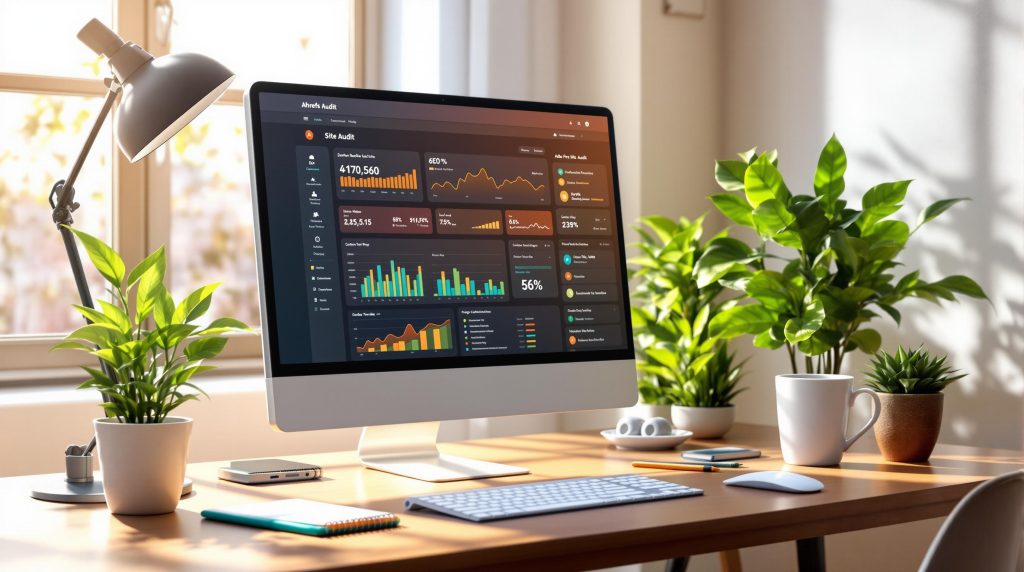
Last Updated on 7 October 2025 by Dorian Menard
As an Australian business owner, you know you can have the best products or services in the world, but if your website’s technical foundation is shaky, you’re building on sand. An Ahrefs Site Audit is the single best way to find and fix the cracks that are holding your site back from its true ranking potential.
It’s a powerful tool, but getting the most out of it requires a clear strategy.
In my experience running Search Scope here in Perth, I’ve seen firsthand how a thorough Ahrefs audit can transform a business’s online visibility. This guide is designed for you, the business owner, to get straight to the actionable steps. We’ll skip the jargon and focus on what matters for driving more traffic and leads.
Here’s what you’ll get:
- Quick Setup: How to configure your first audit for the most accurate results.
- Actionable Reports: Learn to read the Health Score and prioritise fixes that actually impact your bottom line.
- Core Fixes: Step-by-step instructions for solving common indexing, linking, and speed issues.
- Maintenance Plan: A simple process to keep your site healthy and coordinate with your team.
SEO Audit: How to Fix Your Website’s Technical SEO Issues
An Ahrefs SEO audit scans your website for over 170 potential issues that could be hurting your performance on Google. It’s like a health check-up that tells you exactly what to fix to improve your rankings and user experience.
Think of it as the foundation of your house. Without a solid technical base, all the effort you put into content and design might not deliver the results you expect. A regular SEO audit ensures that foundation remains strong.
First-Time Setup Guide
Getting started with a proper setup is key to running accurate audits. Here’s how to set everything up step by step.
Starting a Project
Your first step is to create a project in Ahrefs. The fastest way is by importing your site directly from Google Search Console (GSC). This method is highly recommended because it provides Ahrefs with valuable data about how Google sees your site, making your audit results more insightful from day one.
If you prefer a manual setup:
- Click the “+ New Project” button on your Ahrefs dashboard.
- Enter your website’s domain (e.g., yourbusiness.com.au).
- Verify your ownership of the site. Ahrefs provides a few simple methods to do this.
- Configure the initial audit settings to begin the first crawl.
Once the project is created, the next step is to fine-tune the crawl settings.
Crawl Settings
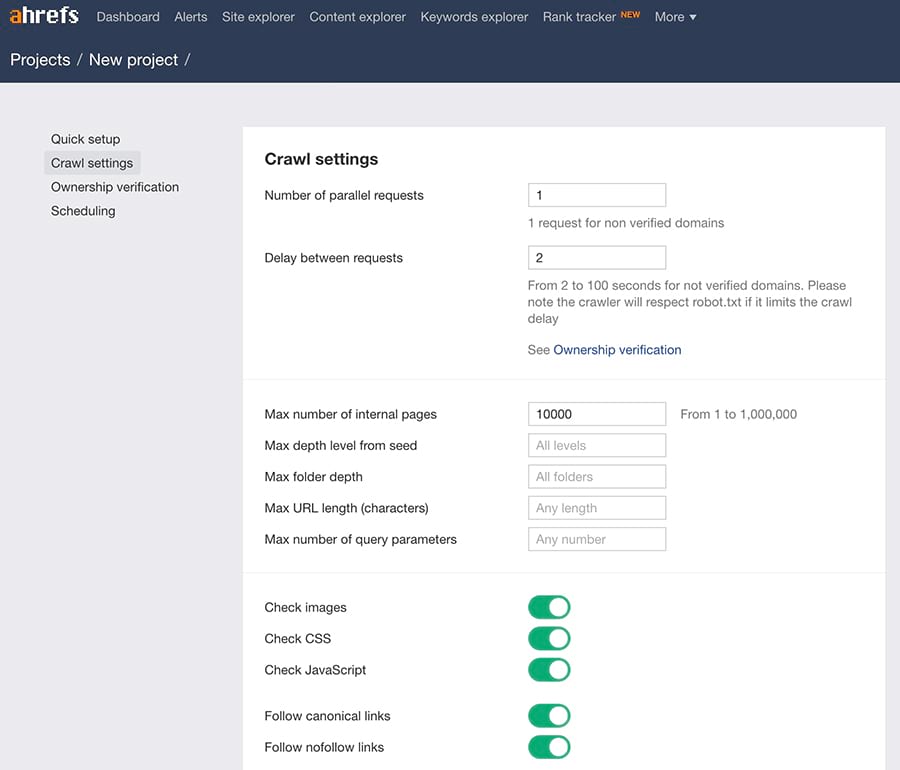
Crawl settings determine how Ahrefs’ bot interacts with your website. While the defaults are generally fine, a few tweaks can ensure a more thorough and accurate audit.
A common mistake I see clients make is forgetting to enable JavaScript rendering. If your site uses frameworks like React or Vue.js, much of your content might be invisible to the crawler without this setting enabled, leading to an incomplete audit.
| Setting Type | Recommended Configuration | Why It’s Important for Your Business |
|---|---|---|
| JavaScript Rendering | Enabled | Ensures the crawler sees content on modern, dynamic websites, just like your customers do. |
| Crawl Speed | Medium (or “Polite”) | Avoids overloading your server, which is crucial if you’re on shared hosting. A slow server can hurt user experience and rankings. |
| User-Agent | Default (AhrefsSiteAudit) | If you use a firewall like Cloudflare, you may need to whitelist this user-agent to allow the crawl to complete. |
| Authentication | Provide Login Details | Allows Ahrefs to crawl password-protected staging sites or member-only areas. |
“A project is any domain, subfolder, or URL that you want to track automatically over time.” – Ahrefs
After configuring these settings, it’s time to put your audits on autopilot.
Setting Up Regular Scans
Technical SEO isn’t a “set and forget” task. New issues can appear as you update your website. Scheduling regular scans is essential for consistent monitoring.
In the Schedule section of your Site Audit settings, you can automate this process.
- Scan Frequency: For a typical business website that updates its blog or products regularly, a weekly scan is ideal. This frequency ensures you catch new problems before they impact your rankings.
- Time Selection: Run the scan during your website’s off-peak hours, such as overnight or on the weekend, to minimise any potential impact on your server’s performance.
- Enable Notifications: Ahrefs can email you when a crawl is complete or when new critical errors are found. This is a great way to stay on top of urgent issues without having to log in every day.
A newer feature called “Always-on Site Audits” provides near real-time issue reporting, which is a powerful way to catch problems almost immediately after they appear.
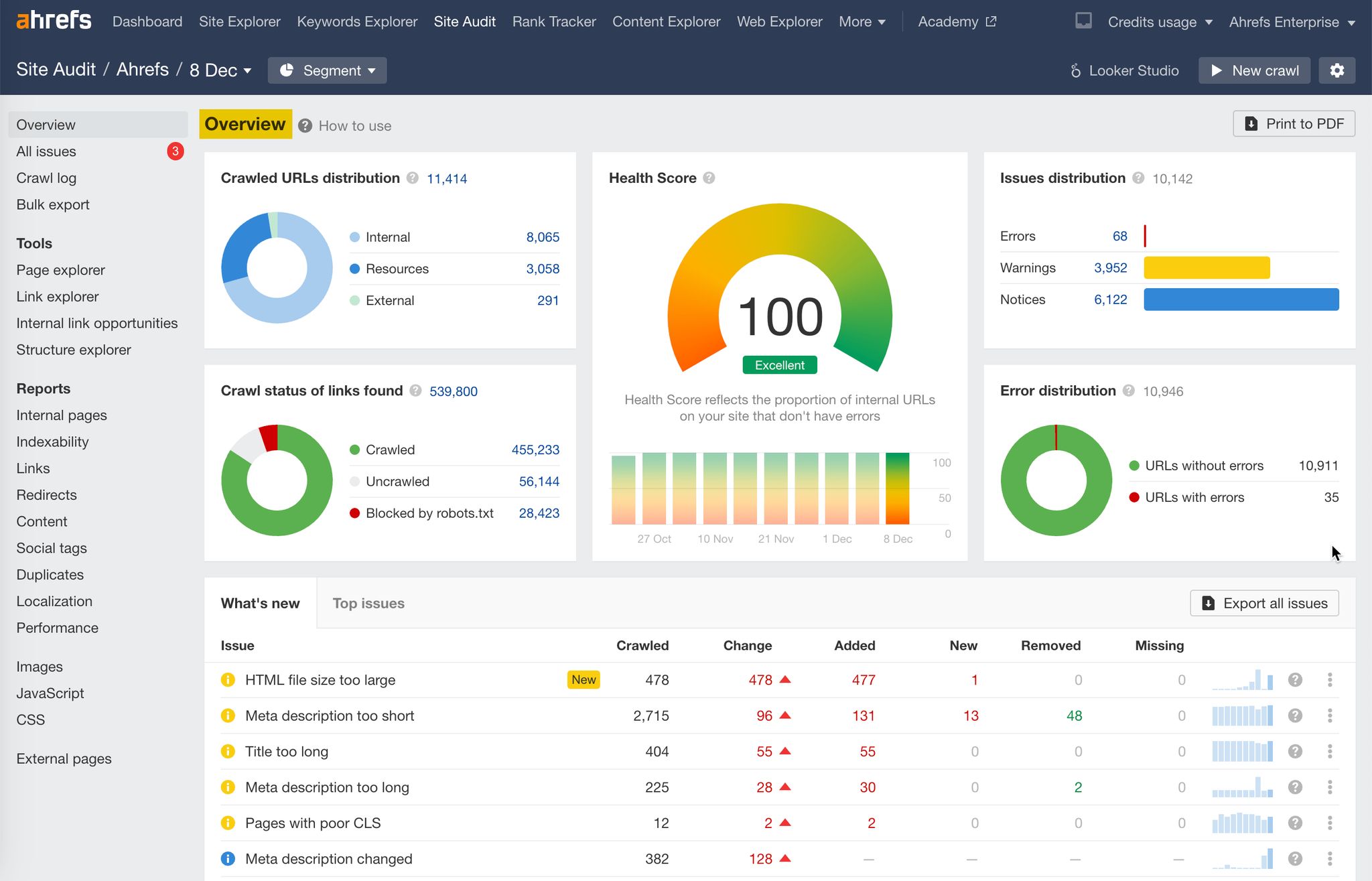
Reading Audit Results
Once your audit is complete, Ahrefs presents the data in a clear dashboard. To improve your site’s health, focus on your Health Score, understand the Issue Types, and review the Crawl Data.
Health Score Explained
The Health Score is a simple, top-line metric that shows the percentage of your website’s internal URLs that are free from errors. It’s a quick way to gauge your site’s overall technical SEO condition.
| Health Score Range | Rating | What It Means for Your Business |
|---|---|---|
| 90-100 | Excellent | Your site’s technical foundation is strong, allowing your content to perform at its best. |
| 70-89 | Good | Solid, but there are improvement opportunities that could be holding back some pages. |
| 40-69 | Fair | Significant technical issues are likely impacting your rankings and user experience. Action is needed. |
| 0-39 | Poor | Critical errors require immediate attention as they are severely hindering your site’s visibility. |
“Health Score reflects the proportion of internal URLs on your site that don’t have errors.” – Ahrefs
Your goal should be to get your Health Score above 90. While a perfect 100 is ideal, it’s not always achievable for very large or complex sites, and that’s okay. The key is to fix the errors that matter most.
Issue Types and Priority
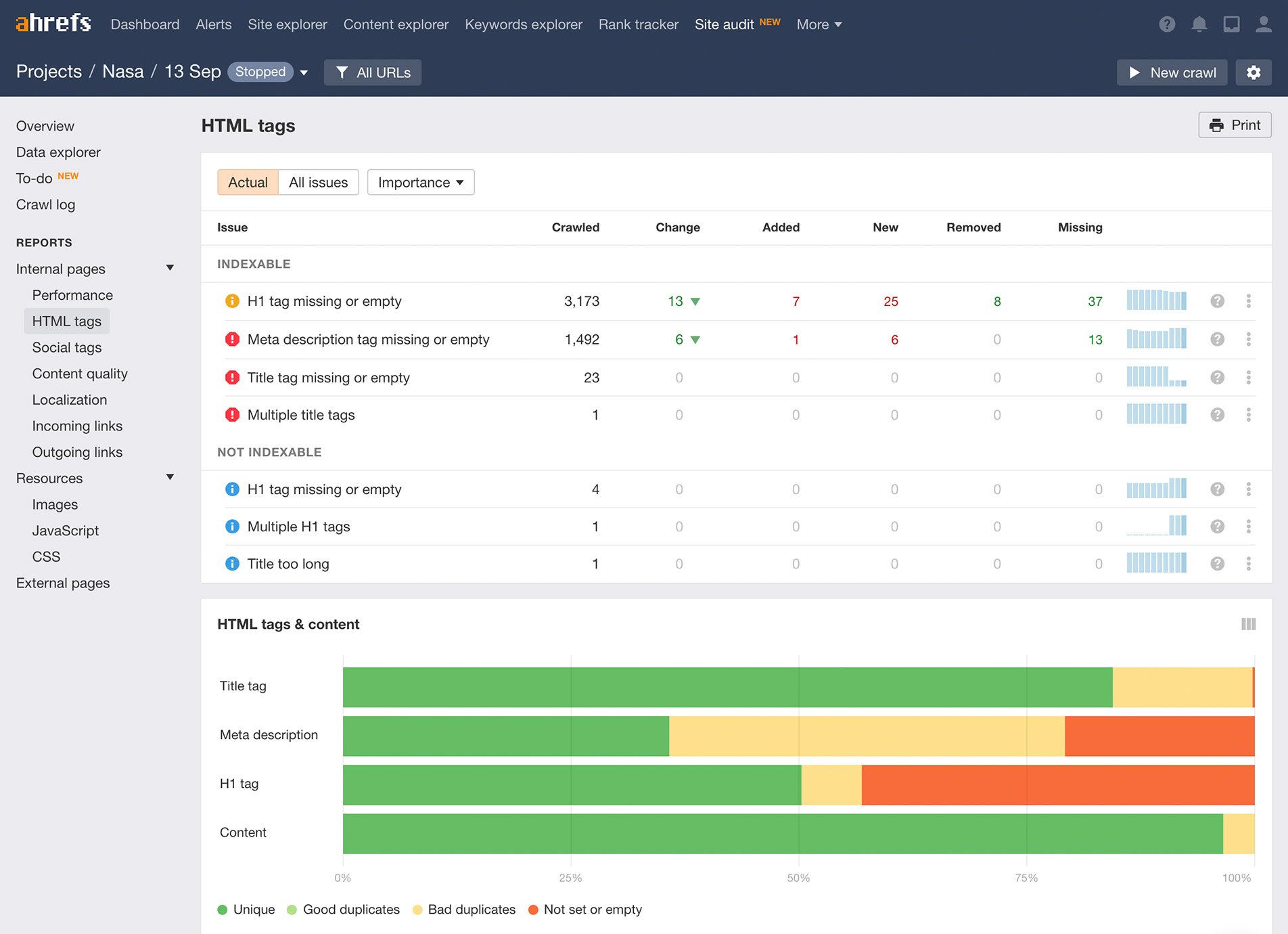
Ahrefs categorises issues into three levels to help you prioritise your efforts effectively.
- Errors (Red): These are the most critical problems. Think of issues like broken pages (404s) or incorrect canonical tags that can directly prevent Google from indexing your important pages. Always fix these first.
- Warnings (Yellow): These are moderately important issues that can negatively affect your SEO. Examples include missing image alt text or pages with a low word count. Address these after all errors are resolved.
- Notices (Blue): These are generally minor issues or opportunities for optimisation. An example is a page that redirects. These are good to review but are the lowest priority.
“The Technical SEO Audit is like an assessment of the foundation of a house. You can still live in a house without a great foundation, but eventually cracks will appear. If you don’t take care of your Technical SEO issues early, you might end up reducing the impact of other SEO efforts and limiting your potential growth.” – Rodrigo Lasanta, Lead SEO Specialist
This prioritisation system is crucial for busy business owners. It stops you from wasting time on minor tweaks when major problems exist.
Crawl Data Overview
The crawl data gives you a high-level view of how search engine bots interact with your site. You can find this in the “Indexability” and “Performance” reports. Focus on these key metrics:
| Metric | Target/Goal | Why It Matters |
|---|---|---|
| Page Response Status | >95% OK (200) | Ensures that the vast majority of your pages are accessible to users and search engines. A high number of broken (4XX) or server error (5XX) pages is a major red flag. |
| Time to First Byte (TTFB) | Under 200ms | This is a key server response metric. A slow TTFB means your server is slow to respond, which directly impacts page load speed and user experience. |
| Page Load Time | Under 3 seconds | Faster pages are proven to have better engagement and conversion rates. Ahrefs connects to the PageSpeed Insights API to check Core Web Vitals in bulk. |
Use the “Why and how to fix” feature next to each issue in your Ahrefs report. It provides clear, step-by-step instructions that you or your developer can follow.
sbb-itb-c74901f
Fixing SEO Problems
With the insights from your audit, you can now systematically address problems with indexing, internal linking, and site performance. Here’s a practical approach to tackling these challenges.
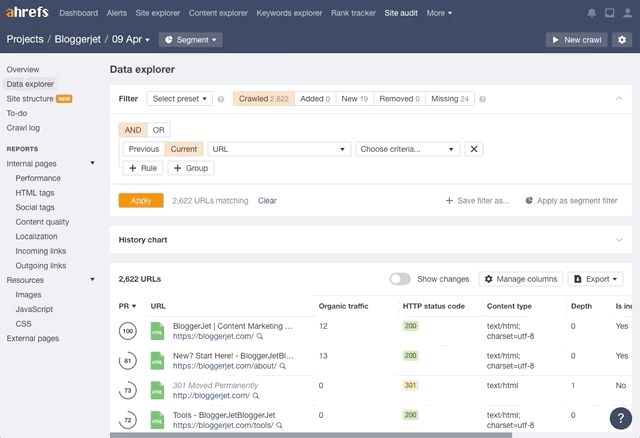
Page Indexing Fixes
If Google can’t index your important pages, you won’t get any traffic. It’s that simple. Head to the “Indexability” report in your audit and use the free Ahrefs Webmaster Tools (AWT) to check these common issues:
- Incorrect Canonical Tags: A canonical tag tells Google which version of a page is the “main” one. If this points to a broken page or a redirected URL, it confuses search engines. Ensure all canonical tags point to the live, final version of the page.
- Accidental ‘noindex’ Tags: The ‘noindex’ tag tells Google to keep a page out of its index. This is sometimes accidentally left on important pages after a site redesign. Check the “Noindex page” report and remove the tag where it’s not needed.
- Orphan Pages: These are pages that have no internal links pointing to them, making them very difficult for Google to find. Ahrefs’ “Internal link opportunities” tool is brilliant for finding where to link from to fix this.
Fixing these indexing issues ensures that search engines can find and rank all of your valuable content.
Internal Link Structure
“Internal linking is super critical for SEO. It’s one of the biggest things you can do on a website to guide Google and visitors to the pages that you think are important.” – Dorian, Perth SEO Expert.
A strong internal linking structure helps spread authority throughout your site and guides users to your most important pages. Here’s how to build one effectively:
| Action Item | How to Do It in Ahrefs | Why It Matters for Your Business |
|---|---|---|
| Deep Linking | Use the “Internal links” report to see where you’re linking. Prioritise linking to important product or service pages, not just your homepage or contact page. | Boosts the ranking potential of your key money-making pages by passing authority to them. |
| Descriptive Anchor Text | Check the “Anchors” report. Avoid generic text like “click here.” Use descriptive anchors like “our local SEO services in Perth.” | Helps Google understand the context of the linked page, improving its chances to rank for relevant keywords. |
| Fix Broken Links | Go to the “Internal pages” report and filter for “4XX page” issues. These are dead ends for both users and search engines. | Improves user experience and prevents the loss of link equity, keeping your site’s authority intact. |
By improving your internal links, you make your site easier to navigate for both customers and search engines, which is a win-win.
Speed and Web Vitals
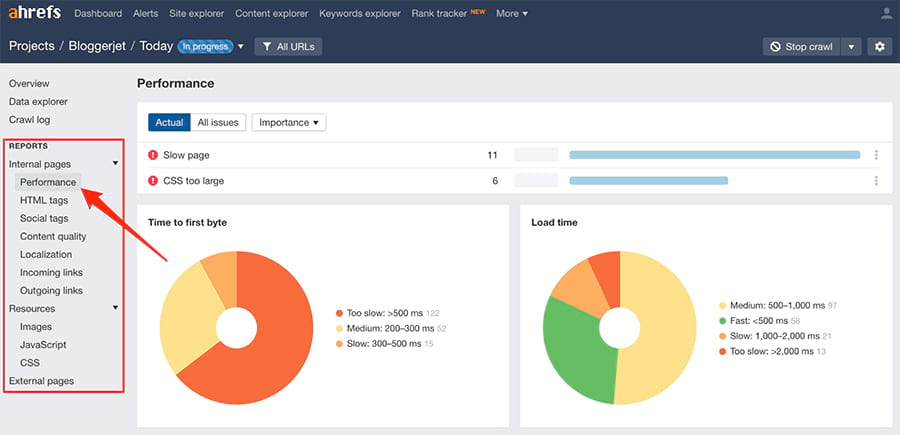
Site speed and Core Web Vitals are direct ranking factors. A slow, clunky site will frustrate users and hurt your visibility. Ahrefs pulls in this data so you can see which pages need work.
Here are the three Core Web Vitals and their targets for 2025:
| Metric | Target Score | Key Areas to Focus On |
|---|---|---|
| LCP (Largest Contentful Paint) | ≤2.5 seconds | Optimise large images using a tool like TinyPNG, and ensure your web hosting is fast. |
| INP (Interaction to Next Paint) | ≤200ms | Reduce heavy JavaScript. Work with your developer to split up long tasks that can freeze the page. |
| CLS (Cumulative Layout Shift) | ≤0.1 | Specify dimensions (width and height) for all images and video embeds to prevent content from jumping around as it loads. |
To improve these metrics, focus on compressing image and video files, enabling browser caching, and minimising the use of bulky plugins or scripts.
Advanced Tools and Features
Beyond the basic fixes, Ahrefs offers advanced tools that allow for more precise optimisation. Here’s a look at how these features can further improve your website’s performance.
Content Analysis
These tools help you refine your content strategy with data, not guesswork.
| Analysis Feature | Purpose | Actionable Tip for Your Business |
|---|---|---|
| Duplicate Content Detection | Finds pages with identical or very similar content, which can confuse Google. | Check the “Duplicates” report. For any identified duplicates, either remove one page and redirect it (301) to the other, or use a canonical tag to specify the primary version. |
| Content Gap Analysis | Identifies keywords your competitors rank for, but you don’t. | Use Ahrefs’ Site Explorer tool. Enter 2-3 of your top competitors to find content topics you’re missing that are clearly valuable in your industry. |
| Low Word Count Pages | Flags pages that are thin on content. | While not always an issue (e.g., a contact page), a service page with very little text is a missed opportunity. Use this report to identify key pages that need more descriptive, helpful content. |
“Site Audit crawls all your website’s pages. It flags all possible technical and on-page SEO issues, provides recommendations on how to fix them, visualises key data in a chart, and delivers an overall SEO health score.” – Ahrefs
Schema Markup Check
Schema markup is code that helps Google understand your content better, which can lead to “rich snippets” in search results (like star ratings or FAQs). Ahrefs checks for errors in this code.
- Validation Process: Go to the “All issues” report and search for “schema.” Ahrefs will flag any parsing errors or invalid schema types.
- Implementation Check: After fixing errors, use Google’s Rich Results Test tool to validate the schema on individual pages. Then, submit the critical URLs through Google Search Console to encourage a faster re-crawl.
Tool Integration Tips
Ahrefs works even better when connected with other tools. This creates a more complete picture of your SEO performance.
| Integration Type | Recommended Tools | Key Benefits for Your Business |
|---|---|---|
| Analytics | Google Analytics, Adobe Analytics | Connect user behaviour data (like bounce rate) with technical issues found in Ahrefs. A high bounce rate on a slow page confirms a critical problem. |
| Rank Tracking | SERPWatcher, Ahrefs Rank Tracker | See how your rankings for key terms improve as you fix technical issues and improve your Health Score. |
| Technical SEO | Screaming Frog, Sitechecker | Screaming Frog is excellent for very deep, granular technical audits, while Ahrefs provides a more holistic, ongoing view. Many pros use both. |
| Data Visualisation | Looker Studio (Google), Tableau | Build custom SEO dashboards that pull data from Ahrefs, GSC, and GA into one place for easy reporting. |
A pro-tip I share with clients is to use Zapier to connect Ahrefs to a project management tool like Asana or Trello. You can automatically create a task for your developer whenever a new critical error is found in an audit.
Website Maintenance Guide
After your initial clean-up, ongoing maintenance is essential to keep your site in top shape. This requires a consistent process for managing issues, monitoring progress, and coordinating with your team.
Issue Management
Ahrefs’ prioritisation system makes ongoing management straightforward. Here’s a simple workflow:
- Focus on Errors First: Always start with the red “Errors.” These have the biggest potential impact on your SEO.
- Schedule Fixes for Warnings: Once errors are cleared, move on to yellow “Warnings.” These are important but less urgent.
- Review Notices Quarterly: Blue “Notices” are often minor. Review them every few months to see if any quick optimisations can be made.
Use the Data Explorer in Ahrefs to create specific tasks. You can filter for an issue (e.g., “Broken internal links”), export the list of affected URLs, and send it directly to your developer with clear instructions.
Progress Monitoring
Tracking your progress keeps you motivated and demonstrates the ROI of your efforts. The Health Score is your main KPI here.
- Automated Audits: Your scheduled weekly crawls will generate a historical graph of your Health Score. A steady upward trend is a clear sign of success.
- Segment Analysis: You can create custom segments to monitor specific parts of your site. For example, create a segment for your blog to track its technical health separately from your product pages. This is great for identifying section-specific issues.
| Website Section | Focus Area | Key Metrics to Watch |
|---|---|---|
| Product Pages | Schema markup, page speed | Load time, Indexability status |
| Blog Content | Internal links, metadata | Orphan pages, Duplicate titles |
| Landing Pages | Core Web Vitals, mobile-friendliness | LCP, INP, and CLS scores |
Use the crawl history feature to compare audits over time. This helps you pinpoint exactly when a new issue appeared, making it much easier to diagnose the cause.
Team Coordination
Effective SEO is a team effort. Ahrefs includes features designed to make collaboration easier.
Assign roles within your Ahrefs workspace to control who can change settings versus who can only view reports.
| Role | Permissions | Best For |
|---|---|---|
| Workspace Admin | Full control | Business Owner or Lead SEO |
| Members | Project-specific access | Marketing team members who implement fixes |
| Guests | View-only access | Developers or external partners who need to see reports |
A simple weekly check-in can work wonders. Review the latest audit report, assign new tasks based on priority, and set clear deadlines. Exporting issue reports as a CSV or PDF provides a clean and simple way to hand off tasks to team members who may not use Ahrefs directly.
Conclusion
An Ahrefs Site Audit is an essential tool for maintaining the technical health of your website. As part of our daily process for our local SEO services, we use it to scan for and prioritise technical issues.
It organises problems by severity, allowing you to focus on what truly matters.
| Priority Level | Impact | Action Required |
|---|---|---|
| Critical Errors | Severe SEO impact | Fix immediately |
| Technical Warnings | Moderate impact | Address in your next sprint |
| Optimisation Notices | Minor adjustments | Review periodically |
This structured approach ensures your website’s foundation is always strong, allowing your other marketing efforts to succeed.
To get started, run your first full site crawl to establish your baseline Health Score and tackle the most urgent errors. From there, focus on strategic implementation and continuous monitoring to improve and maintain your Perth SEO rankings.
Regular audits are the key to long-term performance. By making this a routine part of your business operations, you can ensure your site stays healthy, provides a great user experience, and continues to climb in search rankings.